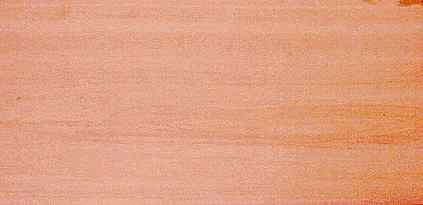
Guava (Psidium guajava)
Family: Myrtaceae
Common names: A'sihui't, Abas, Al-pil-ca, Araza, Araza puita, Arrayan, Arrayana, Banjiro, Bec, Bjui, Cambuny, Chac-pichi, Chalxocotl, Common guava, Enandi, Gobiabiera, Goeajaaba, Goejaba, Goiaba, Gouyave, Goyave, Goyavier, Goyavier a fruits, Gua-ibasim, Guabang, Guafin, Guahva, Guava, Guave, Guayaba, Guayaba perulera, Guayabo, Guayabo cotorrera, Guayabo dulce, Guayava, Guyaba, Hurapo, Kuabang, Kuahpa, La'aru, Luma, Mo'i, Mo-eyi, Ni-joh, Pata, Pehui, Pichi, Pino-oregon, Pocs-cuy, Pojosh, Posh, Posh-keip, Sambadan, Vayeva-vaxi-te, Wild guava, Xoxococuahuitl, Yaga-huii
Distributed in: Belize, Costa Rica, Ecuador, El Salvador, French Guiana, Guadelope [France], Guadeloupe, Guatemala, Honduras, Mexico, Nicaragua, Panama, Puerto Rico, United States (Central America, Latin America, North America, Oceania and S.E. Asia)
Distribution overview: The growth range of reported to include Florida, and Hawaii. A native of tropical America from southern Mexico to South America, its range is greatly extended through cultivation. The species has been planted and naturalized also in southern Florida, including the Florida Keys, Bermuda, and throughout West Indies from Bahamas and Cuba to Trinidad, and south to Brazil. It also grows in Puerto Rioco, chiefly on the coastal plains, but also in the lower mountain regions. Guava is also found in Africa, Asia, and Europe after being introduced by European adventurers, traders, and missionaries.
Common uses: Charcoal, Construction, Fuelwood, Handles: general, Medicinal use, Tool handles, Turnery
Product sources: Guava is known more for its fruits and other parts of the tree than its timber. The fruits are highly popular in many tropical countries. Known as Guayaba in Spanish-speaking countries and Goiaba in Brazil, the fruts are either consumed fresh or processed into drinks, ice cream, and preserves. In Brazil, Guava fruit is part of a very popular desert called Romeo and Juliette, which consists of a slice of firm Guava paste topped with a slice of white cheese.
Environment profile: Widespread, abundant, and globally secure
Tree size: Tree height is 20-30 m
Colors: the heart isWhite, Yellowand the sapwoodWhite, Yellow.The grain isStraight, the textureMediumand the lusterMedium
Natural durability: Non-durable, Perishable
Drying Defects: Checking, Distortion
Ease of Drying: Gum Exudation
Comments: Has a veriety of uses Traditionally, the tree is planted in gardens where it provides shades to allow other plants, such as medicinals to thrive beneath. It thrives on a variety of soils, propagates easily bears fruits quickly, and has spread widely in warm tropical areas with moderate to heavy rainfall. Seeds can produce a mature plant within four years, and like many tropical fruit trees, Guava has numerous uses. The Dutch used parts of the tree to cure illnesses, and its native Latin America, Guava leaves are chewed to treat mouth sores, while the bark is boiled to produce medicine to cure dysentery. In Mexico, the leaves are used to relieve itching, while in Central Africa and Southeast Asia, tannin from the bark and leaves are used for various medicinal purposes
Boring: Fairly easy to very easy
Carving: Fair to Good Results
Cutting Resistance: Easy to saw
Mortising: Fairly Easy to Very Easy
Moulding: Fairly Easy to Very Easy
Movement in Service: Fairly Easy to Very Easy
Planing: Fairly Easy to Very Easy
Resistance to Impregnation: Permeable sapwood
Response to hand tools: Responds Readily
Routing recessing: Fairly Easy to Very Easy
Sanding: Fair to Good Results
Veneering qualities: Veneers easily, Veneers moderately easy
Steam bending: Very Good to Excellent Results
Turning: Fairly Easy to Very Easy
- Numerical data Metric
- Numerical data English
- Strength properties
- References
 |
 |
 |
 |
| Item |
Green |
Dry |
Metric |
| Specific Gravity |
|
|
|
| Density |
|
|
kg/m3 |
| Bending Strength |
954 |
1473 |
kg/cm2 |
| Crushing Strength |
|
|
kg/cm2 |
| Hardness |
|
1051 |
kg |
| Impact Strength |
|
|
cm |
| Shearing Strength |
|
|
kg/cm2 |
| Stiffness |
|
|
1000 kg/cm2 |
| Tangential Shrinkage |
|
|
% |
| Radial Shrinkage |
|
|
% |
| Weight |
|
|
kg/m3 |
| Maximum Load |
|
|
cm-kg/cm3 |
| Toughness |
|
|
cm-kg |
| Static Bending |
|
|
kg/cm2 |
|
 |  |  |  | | Item | Green | Dry | English | | Bending Strength | 13576 | 20956 | psi | | Hardness | | 2318 | lbs | | Maximum Crushing Strength | 6899 | 9945 | psi | |
Max. crushing strength = high
Hardness (side grain) = hard
Bending strength (MOR) = high
Brockman, F.C. and R. Merrilees.1986.Trees of North America - A Guide to Field Identification.Revised Version.Herbert S. Zim, editor. Published by the Golden Press, New York.E.H. Walker,1954,Important Trees of the Ryukyu Islands,United States Civil Administration of the Ryukyu Islands Special Bulletin,No. 3Fors, A.J.,1965,Maderas Cubanas,Inst. Nac. Ref. Agraria La HabaraLittle, E.L., Wadsworth, F.H.,1964,Common Trees of Puerto Rico and the Virgin Islands,U.S.A. Department of Agriculture, Agriculture Handbook,No.249Little, E.L.,1948,A Collection of Tree Specimens from Western Ecuador,Caribbean Forester,9(3,pp215-98Pennington, T.D., Sarukhan, J.,1968,Manual para la Identificacion de campo de los Principales Arboles,Tropicales de Mexico,Inst. Nac. Inv. For. MexicoPurseglove, J.W.1968.Tropical Crops - Dicotyledon 1.John Wiley and Sons, Inc. New York.Reyes, L.J. 1938. Philippine Woods. Department of Agriculture and Commerce, Technical Bulletin 7, Commonwealth of the Philippines, Bureau of Printing, Manila.Sallenave, P.,1955,Proprietes Phyiques et Mecaniques des Bois Tropicaux de l'Union Francaise,C.T.F.TSchiffino, J.,1945,Riqueza Forestal Dominicana (Three volumes,Secretaria de Estado de Agric. Ind. y TrabajoSmith, N.J.H, J.T. Williams, D.L. Plucknett and J.P. Talbot.1992.Tropical Forests and their Crops.Comstock Publishing Associates, a division of Cornell University Press, Ithaca.Williams, L.1936. Woods of Northeastern Peru.Field Museum of Natural History, Botanical Series, Volume XV, Publication 377, Chicago.
|








